If you’re a history buff, or time traveler, this could come in handy.
With all apologies to Nara, nowhere in Japan can match Kyoto’s reverent connection to its history. The city served as the seat of imperial power for centuries, most gloriously during the Heian period of the 9th to 12th centuries.
Walking along the city’s streets can sometimes feel like taking a trip into the past, and if that’s where you’re going, you’ll want a period-accurate map, like the interactive one developed by Kyoto’s Ritsumeikan University.
Called the Heiankyo Overlay Map, the clever navigational tool (which can be found here) works with Google map’s data for the city. For example, here we see the area directly north of modern-day Kyoto Station.
But by dragging the slider at the top right corner of the map, you can place or remove an overlay of what the corresponding area looked like in the Heian era.
▼ The slider, indicated by a red arrow
Now hundreds of years in the past, we can see that before the Kyoto Station area was filled with tourists and commuters, it was a gathering point for the religious faithful, as indicated by the large numbers of temples (which bear the kanji 院 on the map).
Of course, some temples have held onto their lands. The Higashi Honganji Temple (東本願寺), for instance, has been an influential and important institution for generations, and was as prominent a fixture of the old Kyoto cityscape as it is the new.
▼ Then (top) and now (bottom)
As a matter of fact, comparing certain addresses shows that Kyoto has even gained a few cultural properties through the years. Nijo Castle, one of the country’s best-loved fortresses, wasn’t built until 1626, and so it doesn’t appear on the Heian period map.
▼ Where’d you go, Nijo?
And sometimes the Heiankyo Overlay Map reveals some unexpected parallels between the past and present. In the area now known as the Kawaramachi entertainment district, sliding the slider to the Heian period map shows a Buddhist temple and Shinto shrine in close proximity, two technically competing yet coexisting providers of the same service.
▼ Shinto shrine circled in red, Buddhist temple in blue
And what do we find just a stone’s throw away in the present day?
▼ A McDonald’s and a Mos Burger
Truly, the more things change, the more they stay the same.
Source: Japaaan
Insert images: Ritsumei University

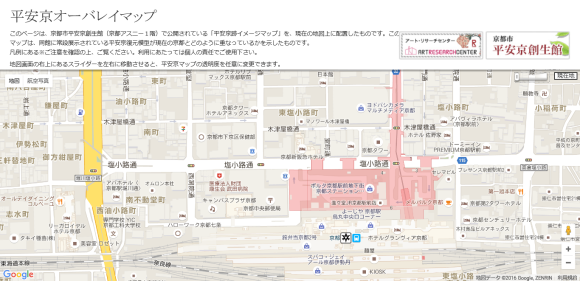
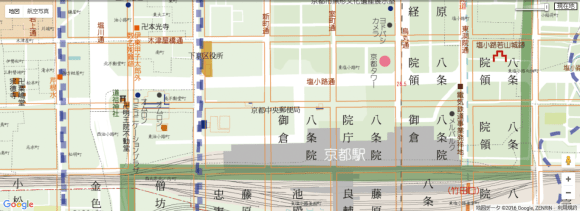

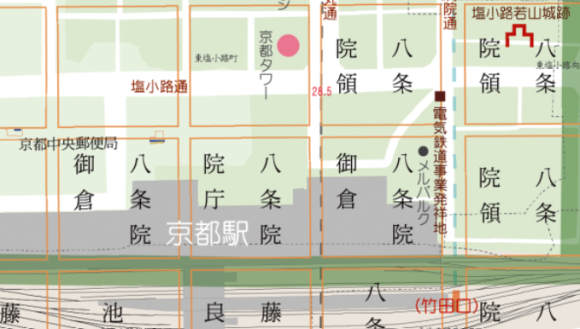
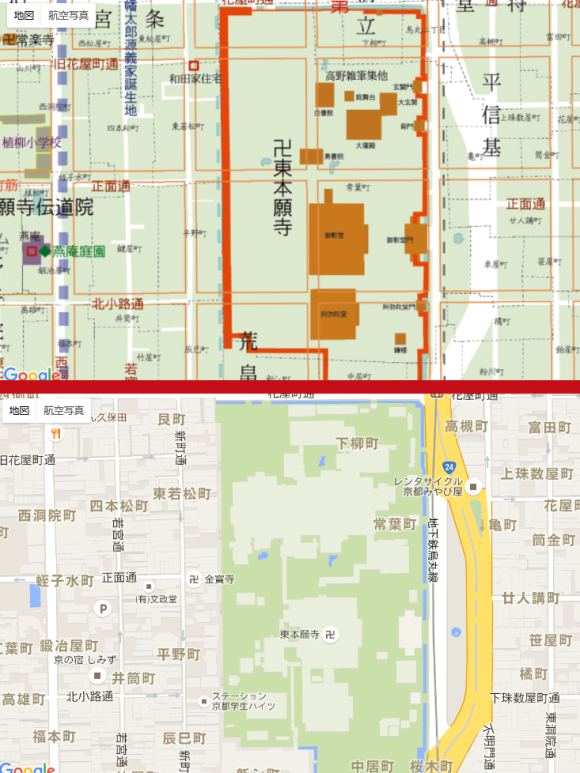
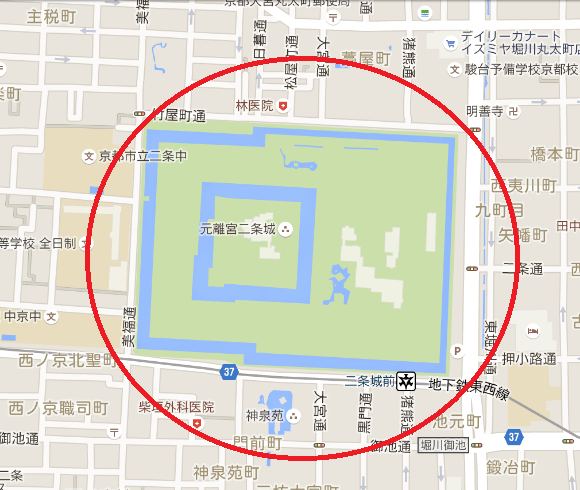
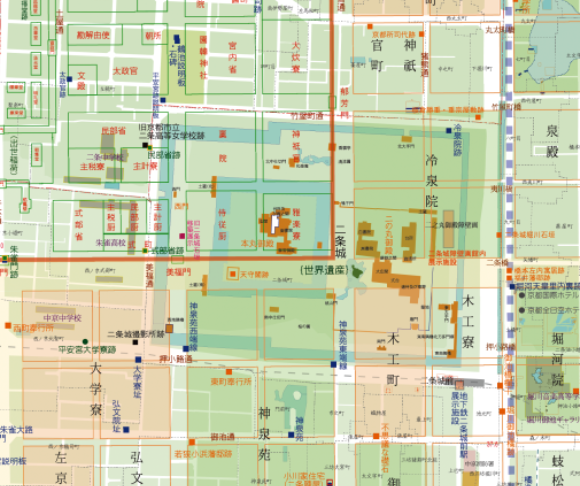
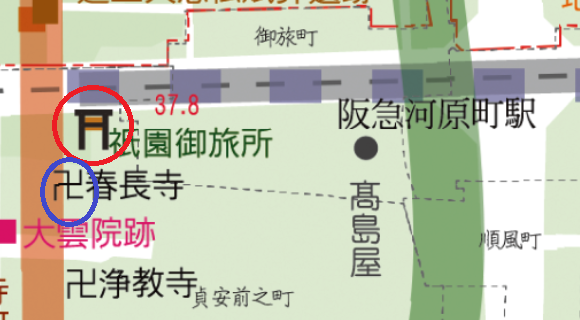
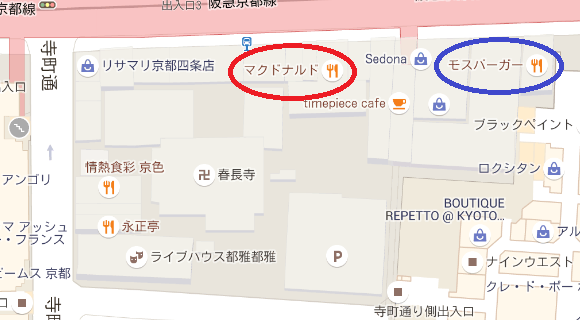
 Japanese monks want to create new temple…in space!
Japanese monks want to create new temple…in space! Kyoto hotel OMO5 Kyoto Gion offers Yojiya cosmetics Pretty Girl Room Stay for New Year’s season
Kyoto hotel OMO5 Kyoto Gion offers Yojiya cosmetics Pretty Girl Room Stay for New Year’s season The all-new Kyotrain, maybe Japan’s most Japanese train ever, will take you to Kyoto this spring
The all-new Kyotrain, maybe Japan’s most Japanese train ever, will take you to Kyoto this spring Five amazing Japanese Starbucks locations that let you keep sightseeing as you take a break
Five amazing Japanese Starbucks locations that let you keep sightseeing as you take a break Japanese government recommends changing Buddhist temple mark on maps to avoid Nazi connotations
Japanese government recommends changing Buddhist temple mark on maps to avoid Nazi connotations Foreigner’s request for help in Tokyo makes us sad for the state of society
Foreigner’s request for help in Tokyo makes us sad for the state of society Japanese city loses residents’ personal data, which was on paper being transported on a windy day
Japanese city loses residents’ personal data, which was on paper being transported on a windy day Ghibli Park now selling “Grilled Frogs” from food cart in Valley of Witches
Ghibli Park now selling “Grilled Frogs” from food cart in Valley of Witches Osaka governor suggests lowering voting age to 0 to curb population decline
Osaka governor suggests lowering voting age to 0 to curb population decline Harajuku Station’s beautiful old wooden building is set to return, with a new complex around it
Harajuku Station’s beautiful old wooden building is set to return, with a new complex around it Historical figures get manga makeovers from artists of Spy x Family, My Hero Academia and more
Historical figures get manga makeovers from artists of Spy x Family, My Hero Academia and more Suntory x Super Mario collaboration creates a clever way to transform into Mario【Videos】
Suntory x Super Mario collaboration creates a clever way to transform into Mario【Videos】 French Fries Bread in Tokyo’s Shibuya becomes a hit on social media
French Fries Bread in Tokyo’s Shibuya becomes a hit on social media Mt. Koya planning to instate visitor’s tax to cope with huge tourist numbers
Mt. Koya planning to instate visitor’s tax to cope with huge tourist numbers Red light district sushi restaurant in Tokyo shows us just how wrong we were about it
Red light district sushi restaurant in Tokyo shows us just how wrong we were about it McDonald’s new Happy Meals offer up cute and practical Sanrio lifestyle goods
McDonald’s new Happy Meals offer up cute and practical Sanrio lifestyle goods Japanese ramen restaurants under pressure from new yen banknotes
Japanese ramen restaurants under pressure from new yen banknotes Studio Ghibli releases new action figures featuring Nausicaä of the Valley of the Wind characters
Studio Ghibli releases new action figures featuring Nausicaä of the Valley of the Wind characters New private rooms on Tokaido Shinkansen change the way we travel from Tokyo to Kyoto
New private rooms on Tokaido Shinkansen change the way we travel from Tokyo to Kyoto Tokyo Tsukiji fish market site to be redeveloped with 50,000-seat stadium, hotel, shopping center
Tokyo Tsukiji fish market site to be redeveloped with 50,000-seat stadium, hotel, shopping center All-you-can-drink Starbucks and amazing views part of Tokyo’s new 170 meter-high sky lounge
All-you-can-drink Starbucks and amazing views part of Tokyo’s new 170 meter-high sky lounge Beautiful Ghibli sealing wax kits let you create accessories and elegant letter decorations【Pics】
Beautiful Ghibli sealing wax kits let you create accessories and elegant letter decorations【Pics】 Studio Ghibli releases Kiki’s Delivery Service chocolate cake pouches in Japan
Studio Ghibli releases Kiki’s Delivery Service chocolate cake pouches in Japan New definition of “Japanese whiskey” goes into effect to prevent fakes from fooling overseas buyers
New definition of “Japanese whiskey” goes into effect to prevent fakes from fooling overseas buyers Our Japanese reporter visits Costco in the U.S., finds super American and very Japanese things
Our Japanese reporter visits Costco in the U.S., finds super American and very Japanese things Studio Ghibli unveils Mother’s Day gift set that captures the love in My Neighbour Totoro
Studio Ghibli unveils Mother’s Day gift set that captures the love in My Neighbour Totoro More foreign tourists than ever before in history visited Japan last month
More foreign tourists than ever before in history visited Japan last month New Pokémon cakes let you eat your way through Pikachu and all the Eevee evolutions
New Pokémon cakes let you eat your way through Pikachu and all the Eevee evolutions Sales of Japan’s most convenient train ticket/shopping payment cards suspended indefinitely
Sales of Japan’s most convenient train ticket/shopping payment cards suspended indefinitely Sold-out Studio Ghibli desktop humidifiers are back so Totoro can help you through the dry season
Sold-out Studio Ghibli desktop humidifiers are back so Totoro can help you through the dry season Japanese government to make first change to romanization spelling rules since the 1950s
Japanese government to make first change to romanization spelling rules since the 1950s Ghibli founders Toshio Suzuki and Hayao Miyazaki contribute to Japanese whisky Totoro label design
Ghibli founders Toshio Suzuki and Hayao Miyazaki contribute to Japanese whisky Totoro label design Doraemon found buried at sea as scene from 1993 anime becomes real life【Photos】
Doraemon found buried at sea as scene from 1993 anime becomes real life【Photos】 Tokyo’s most famous Starbucks is closed
Tokyo’s most famous Starbucks is closed One Piece characters’ nationalities revealed, but fans have mixed opinions
One Piece characters’ nationalities revealed, but fans have mixed opinions We asked a Uniqlo employee what four things we should buy and their suggestions didn’t disappoint
We asked a Uniqlo employee what four things we should buy and their suggestions didn’t disappoint Princesses, fruits, and blacksmiths: Study reveals the 30 most unusual family names in Japan
Princesses, fruits, and blacksmiths: Study reveals the 30 most unusual family names in Japan This beautiful mountaintop Buddha carving in Japan is much newer than it looks【Photos】
This beautiful mountaintop Buddha carving in Japan is much newer than it looks【Photos】 New app lets you traverse the streets of modern Tokyo and ancient Edo at the same time
New app lets you traverse the streets of modern Tokyo and ancient Edo at the same time One thing NOT to do in Kyoto if you’re headed there during the vacation period
One thing NOT to do in Kyoto if you’re headed there during the vacation period Mounted police officers in Kyoto get Heian Period outfits to match their ancestral colleagues
Mounted police officers in Kyoto get Heian Period outfits to match their ancestral colleagues Kyoto in summer: A special trip to Kifune shrine recharges the soul
Kyoto in summer: A special trip to Kifune shrine recharges the soul Japan’s legendary Brother Katana might not be brothers after all? Investigating the mystery【Pics】
Japan’s legendary Brother Katana might not be brothers after all? Investigating the mystery【Pics】 Millennium-old Japanese temple offering funeral service for broken record player needles
Millennium-old Japanese temple offering funeral service for broken record player needles Terahaku aims to be the Airbnb of Japanese temples
Terahaku aims to be the Airbnb of Japanese temples Travel to Kyoto on the Kyotrain: A Japanese train with interiors like a traditional Kyoto house
Travel to Kyoto on the Kyotrain: A Japanese train with interiors like a traditional Kyoto house Kyoto’s Rurikoin Temple to offer stunning views of autumn leaves for a limited time next month
Kyoto’s Rurikoin Temple to offer stunning views of autumn leaves for a limited time next month Amazing pics from Kyoto/Nara “bullet tour” show no matter how tight your schedule, you should go
Amazing pics from Kyoto/Nara “bullet tour” show no matter how tight your schedule, you should go This Year of the Rabbit, visit some of the best Japanese sightseeing spots related to rabbits
This Year of the Rabbit, visit some of the best Japanese sightseeing spots related to rabbits Kyoto now has Pokémon manhole covers as Generation 2 comes to the real-life Johto region
Kyoto now has Pokémon manhole covers as Generation 2 comes to the real-life Johto region Three reasons you should go to Kyoto right now
Three reasons you should go to Kyoto right now
Leave a Reply